Every day, you could be making careless decisions at home without even knowing it. Follow these basic safety rules to avoid an accident and protect your loved ones:
- Never use a damaged extension cord
- Never use a defective electrical device
- Pull on the plug and not on the cable to unplug an electrical device
- Unplug the toaster before trying to dislodge stuck toast
- Before changing a lightbulb, switch the light off or unplug the lamp
- Make sure to locate electrical wires before drilling a hole in the wall
- Multi-outlets: get the right power bars
- Always unplug the iron before filling it with water
- In the bathroom, never use electrical devices if you are wet or the humidity level is high
- Do not use electrical devices or extension cords near a pool
- If one of the breakers on your distribution panel trips often, spread out your devices onto different circuits
- Do not cut off or bend the third prong of a plug … it’s an important feature
- Never throw water on an outlet that’s on fire
- Mow the lawn safely
- Be careful when removing the cover plate of a switch or outlet
Never use a damaged extension cord
Even a slightly damaged extension cord can cause an accident. Throw it out!
Do not hide an extension cord under a carpet. Over time, it may become damaged and cause a fire.
If you have young children, keep extension cords out of reach. Children may chew on these and get a serious electric shock.
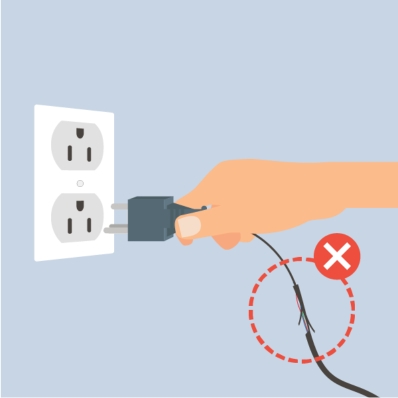
Never use a defective electrical device
When you notice an electrical device is defective, you might be tempted to use it anyway. Never take risks with electricity! Either throw it out or have it repaired.
If you decide to repair it yourself, always unplug it first. If it’s plugged in, one wrong move could cause an electric shock. If you’re not comfortable with electricity, call on a professional instead.
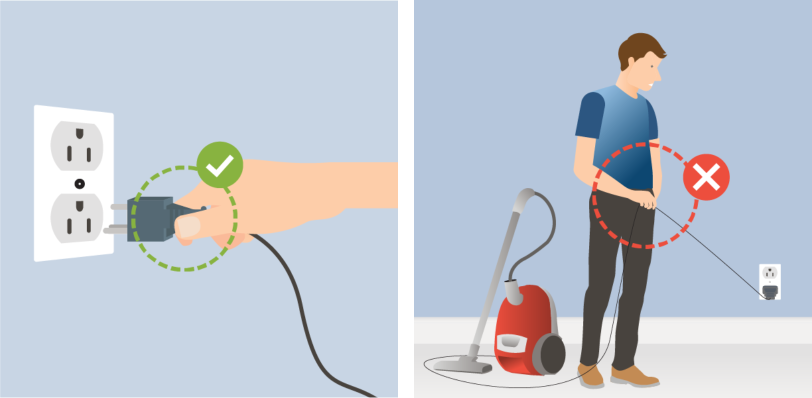
Pull on the plug and not on the cable to unplug an electrical device
That way, you won't damage the electric cable. A damaged cable can cause an accident.
Unplug the toaster before trying to dislodge stuck toast
It's simple and takes only a second! Always unplug the toaster before dislodging stuck toast. Never insert a utensil into a plugged toaster; the risks of electric shock are too high.
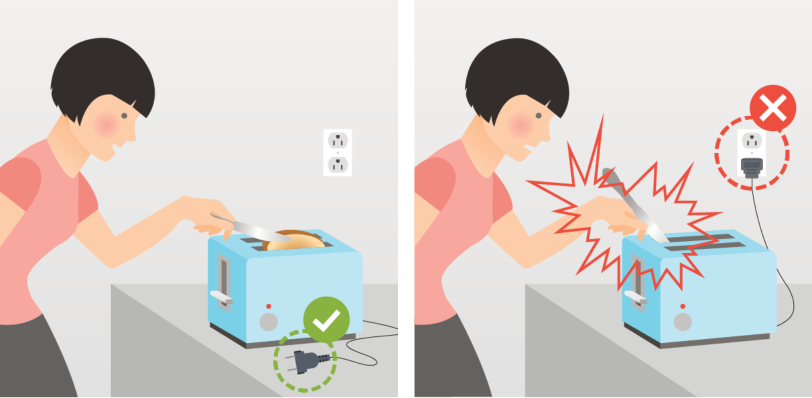
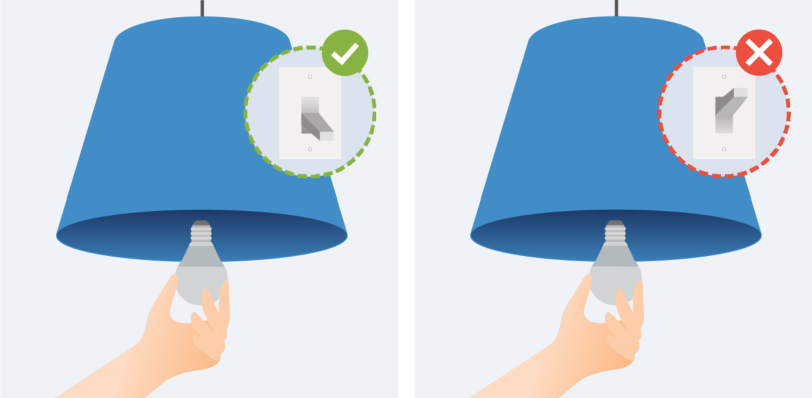
Before changing a lightbulb, switch off the light or unplug the lamp
One wrong move on the stepladder while you’re unscrewing a lightbulb could lead to an accident. Why take such a needless risk?
Switch the light off before replacing the burnt-out bulb, and make sure no one touches the switch while you’re working.
If the light fixture is not connected to a switch (e.g., a bedside or floor lamp), unplug it before replacing the bulb.
Remember to never handle an electrical device or lightbulb with wet hands. Water + Electricity = Danger!
Make sure to locate electrical wires before drilling a hole in the wall
Use a stud and electricity detector. If it detects power behind the wall, drill only through the drywall and check to make sure there are no wires before drilling any further. If you damage an electric wire, you could cause an accident or a fire. If you have any doubts, don’t do the job.
Not sure? Don’t take any risks with electricity. Speak to a master electrician.![]()
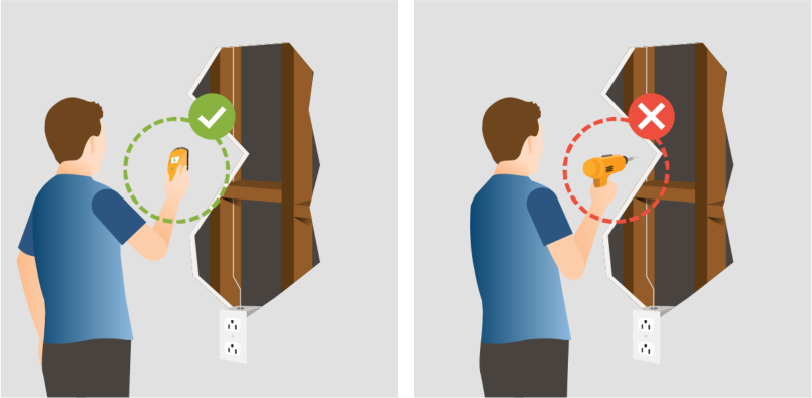
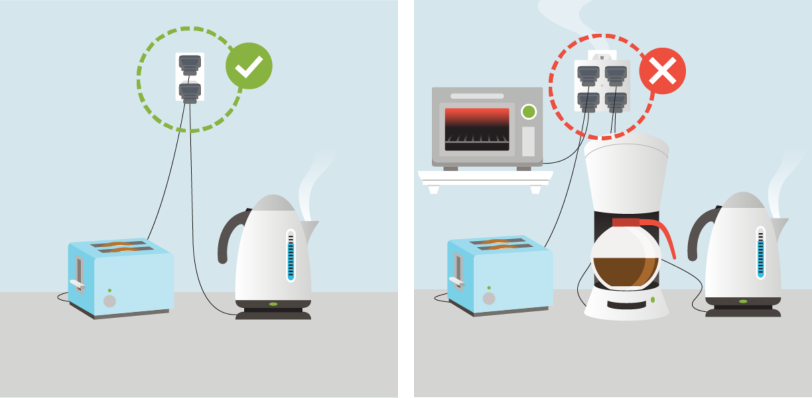
Multi-outlets: get the right power bars
Be careful when using multi-outlet bars. Connecting too many devices that consume a lot of electricity could lead to overheating. Here are some solutions to avoid an electrical overload:
- Use a power bar with a built-in circuit breaker that cuts off the power in case of overload.
- Plug your various devices into different outlets.
- Unplug any devices you’re not using.
In addition, consider protecting your devices from overvoltage, which may be caused by lightning or other factors. Many power bars with a built-in circuit breaker are also equipped with a surge protector.
Always unplug the iron before filling it with water
The same is true for all small appliances, including kettles and humidifiers.
Water conducts electricity. If the water splashes and goes into the appliance, it could give you an electric shock.
Remember: Water + Electricity = Danger!
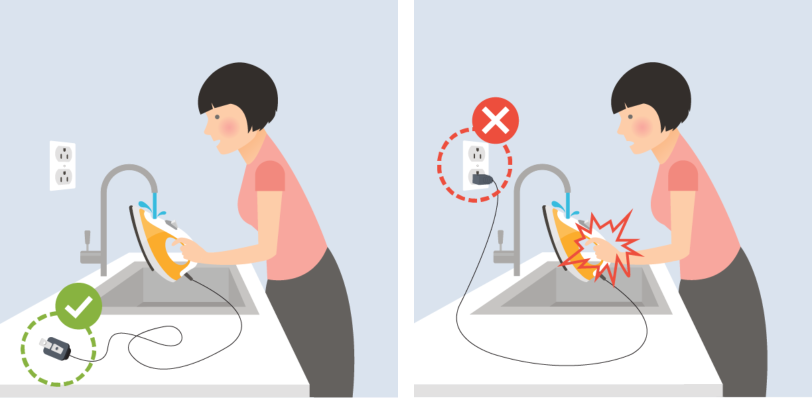
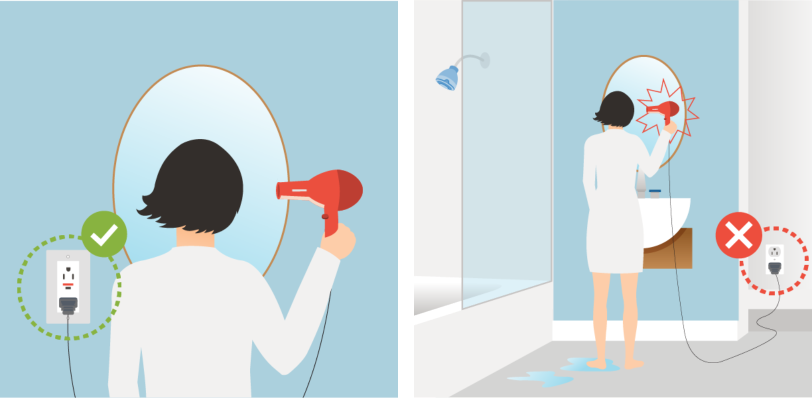
In the bathroom, never use electrical devices if you are wet or the humidity level is high
The electrical outlets in the bathroom must have a protection system (called a ground fault circuit interrupter or GFCI) because they are near a source of water. The GFCI cuts power when water enters a plugged-in device (hairdryer, curling iron, razor, radio, cell phone).
Remember: Water + Electricity = Danger!
Watch out!
Even with a GFCI, using a plugged-in electrical device near a bathtub or shower is never a good idea. For example, taking a bath with your cell phone charging close by is dangerous. If it falls in the water, you could get a serious electric shock.
Not sure? Don’t take any risks with electricity. Speak to a master electrician.![]()
Do not use electrical devices or extension cords near a pool
Use all electrical devices (radios, phones, tablets, etc.) as far away as possible from any water.
For additional security, use batteries or an electrical outlet with a protection system (such as a ground fault circuit interrupter).
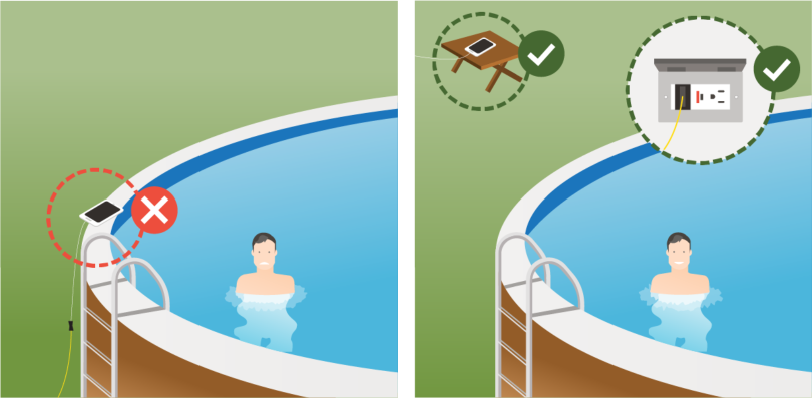
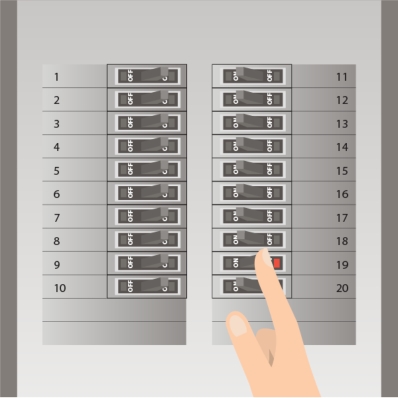
What to do if a circuit breaker on your distribution panel trips
- Unplug any devices that stopped working after the breaker tripped.
- Switch the breaker back on.
If the breaker trips again even though the devices are not plugged in contact a master electrician![]() .
.
If one of the breakers on your distribution panel trips often, spread out your devices onto different circuits. If the problem persists, contact a master electrician![]() .
.
If you have an old fusible distribution panel, always replace a burnt fuse with a fuse whose rating corresponds to the circuit (e.g., use a 15-amp fuse for a 15-amp circuit ).
Do not cut off or bend the third prong of a plug
This grounding prong protects against electrical faults.
Use a three-pronged extension cord and insert the plug properly into the extension’s outlet.
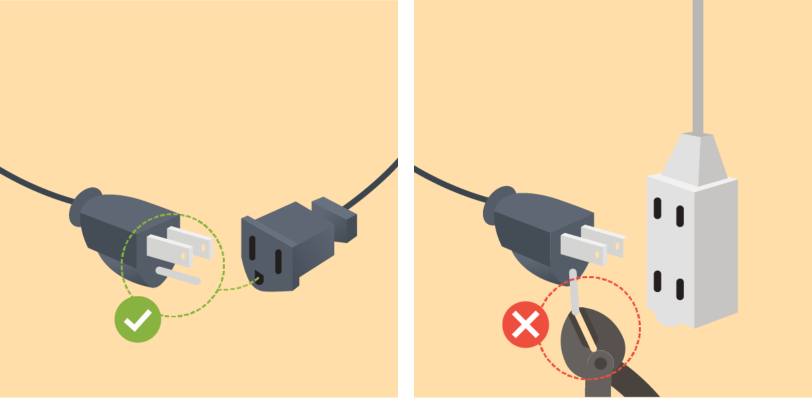
Never throw water on an outlet that’s on fire
Remember: Water + Electricity = Danger!
Cut the power off through the electric panel. If the smoke or fire persists and you have a Class C fire extinguisher for electric equipment, try to put out the fire or call 911.
If the fire spreads, evacuate the home immediately and call 911.
Mowing the lawn safely
If you have an electric lawnmower, make sure the cable is in good condition and be careful not to cut it by mowing over it.
For additional safety, use the lawnmower only when the grass is dry. Make sure to plug your lawnmower into an outlet with a protection system (e.g., a ground fault circuit interrupter).
Finally, wear shoes to reduce the risk of cuts.
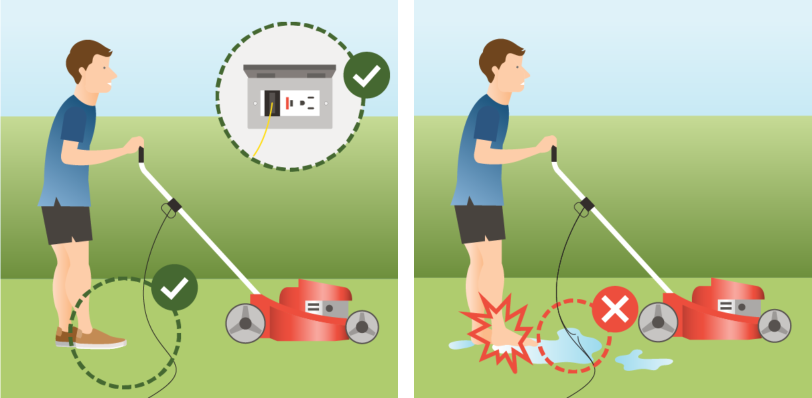
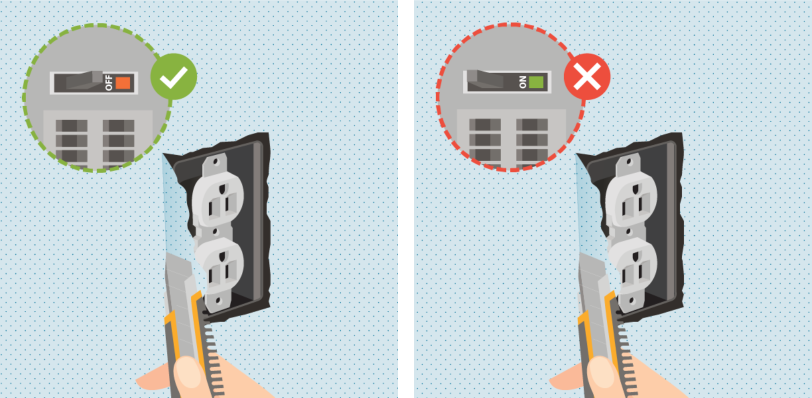
Be careful when removing the cover plate of a switch or outlet
When you remove the cover plate of a switch or outlet to paint the walls or apply a wall covering, your chances of coming into contact with electricity are much higher.
Before cutting wallpaper near an electric outlet or a switch, take the time to turn off the circuit breaker on the distribution panel.